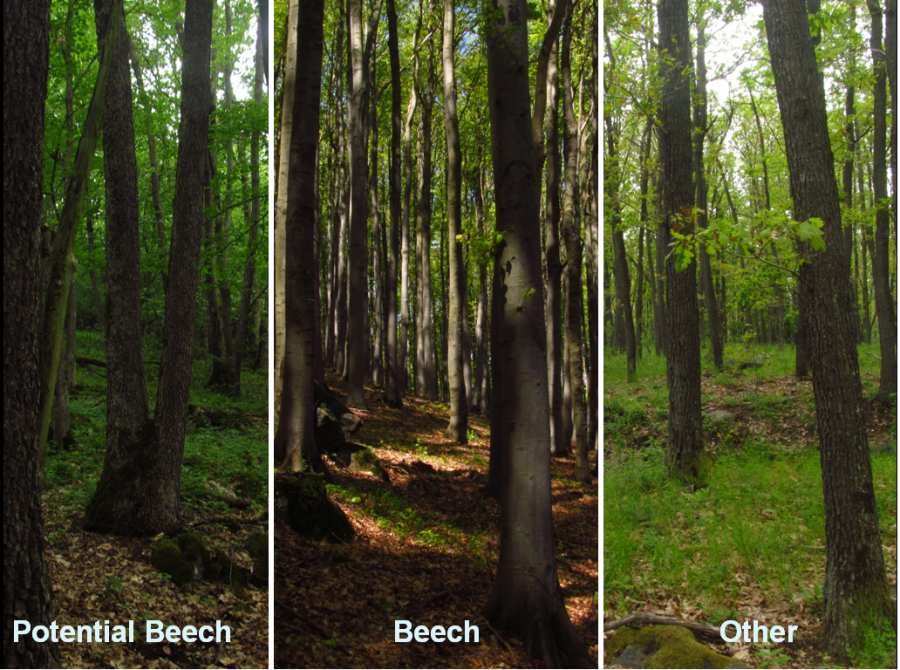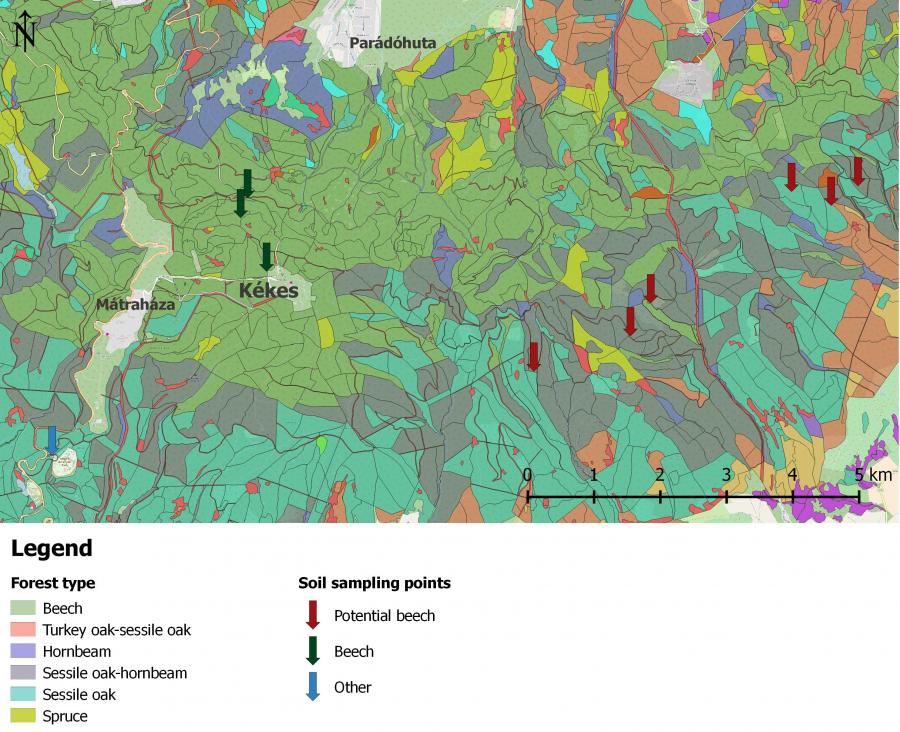AIMS
During our research, we investigated the size of the distribution area of beech dominated forests, and its change due to the effect of historical land use (prior to the Industrial Revolution).
As part of this, we use the DNA metabarcoding method to find traces of the earlier presence of beech at potential beech forest sites - partly by adapting the method of Yoccoz et al. We investigate forest stands in the North Hungarian Mountains, where there is no beech at present, but can be identified as potential beech forest site based on Hungary's potential natural vegetation (PNV) model and the results of the recent 'Carpathian Forests Research' survey. DNA metabarcoding is relatively new in international terms as well. Its use in Hungary raises a number of further exciting opportunities (biodiversity estimates, diet analyzes, community reconstructions, etc.).
METHOD
The basis for DNA metabarcoding is that the soil contains many fragmented DNA sequences from the cells of former living organisms. During the method, these DNA sequences of varying origin and lengths are recovered and then those sequences are selected and amplified that allow plants to be identified (by primers targeting clp trnL p6 loop). The resulting sequences are read (with new generation sequencing), and finally we identify which plant can be linked to which sequences. Using this method, it can be determined whether the plants we have been looking for (beech or herbaceous species of closed forests) have occurred in the examined area in the last ca. 100 years. Then we can compare the species pool of stands of different land use history.

PRELIMINARY RESULTS
We collected soil samples 10 from forest stands per mountain in the Börzsöny, the Mátra and the Bükk Mountains, distributed as follows:
- 6 potential beech forest sites – forest stands identified as potencial beech forests by the PNV model and the survey, but there is no beech tree within a radius of min. 200 m
- 3 beech forests - forest stands identified as potencial beech forests by the PNV model and the survey and are currently beech forests. In this category we also compare stands under silviculture and under protection
- 1 'control', i.e. not beech forest - forest stand that neither the PNV model nor the survey data suggests to be potentially beech forest, nor does it actually contain beech (typically dominated by sessile oak or Turkey oak)
DNA was extracted from the samples and their DNA content was checked. PCR reactions, sequencing, database building, and species identification are in progress.

RELATED PUBLICATIONS
Yoccoz, N. G., Brathen, K. A., Gielly, L., Haile, J., Edwards, M. E., Goslar, T., ... & Sonstebo, J. H. (2012): DNA from soil mirrors plant taxonomic and growth form diversity. Molecular Ecology 21(15): 3647-3655.
Standovár, T., Bán, M. , Kézdy, P. (szerk) (2017) Erdőállapot-értékelés középhegységi erdeinkben. (Forest state assessment in submontane woodlands.) – Duna-Ipoly Nemzeti Park Igazgatóság, Budapest, 616 pp. ISBN 978 615 5241 20 8
MORE INFORMATION
Zsuzsanna Anna Pató (patozsu [at] caesar.elte.hu), PhD student of the ELTE Doctoral School of Biology
Tibor Standovár, associate professor of ELTE TTK Department of Plant Systematics, Ecology and Theoretical Biology
Enikő Magyari, senior research fellow of ELTE TTK Department of Environmental and Landscape Geography